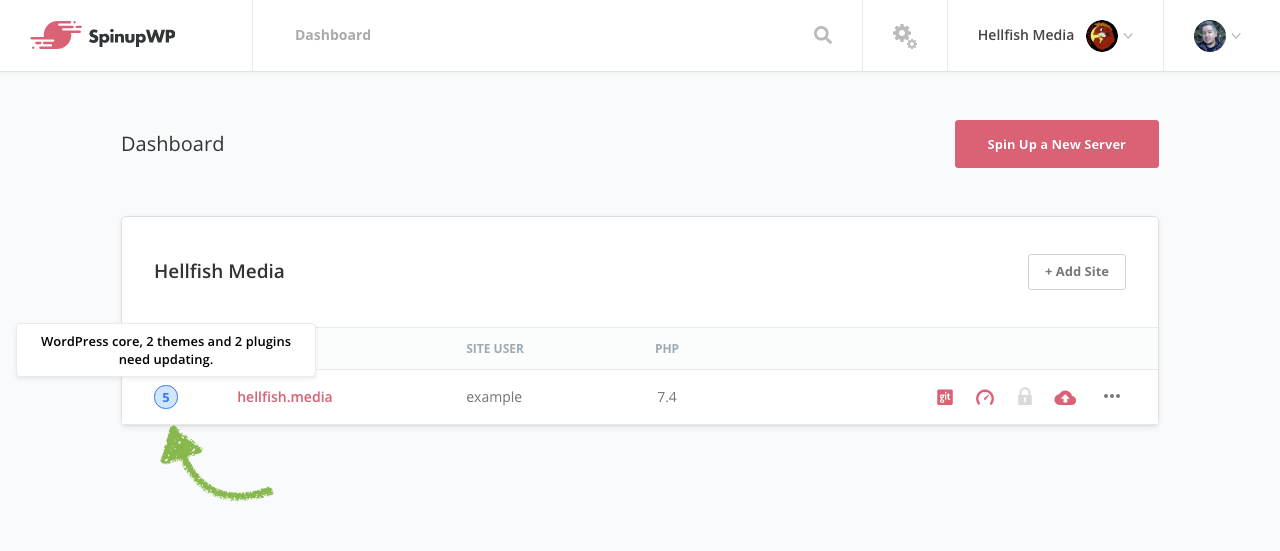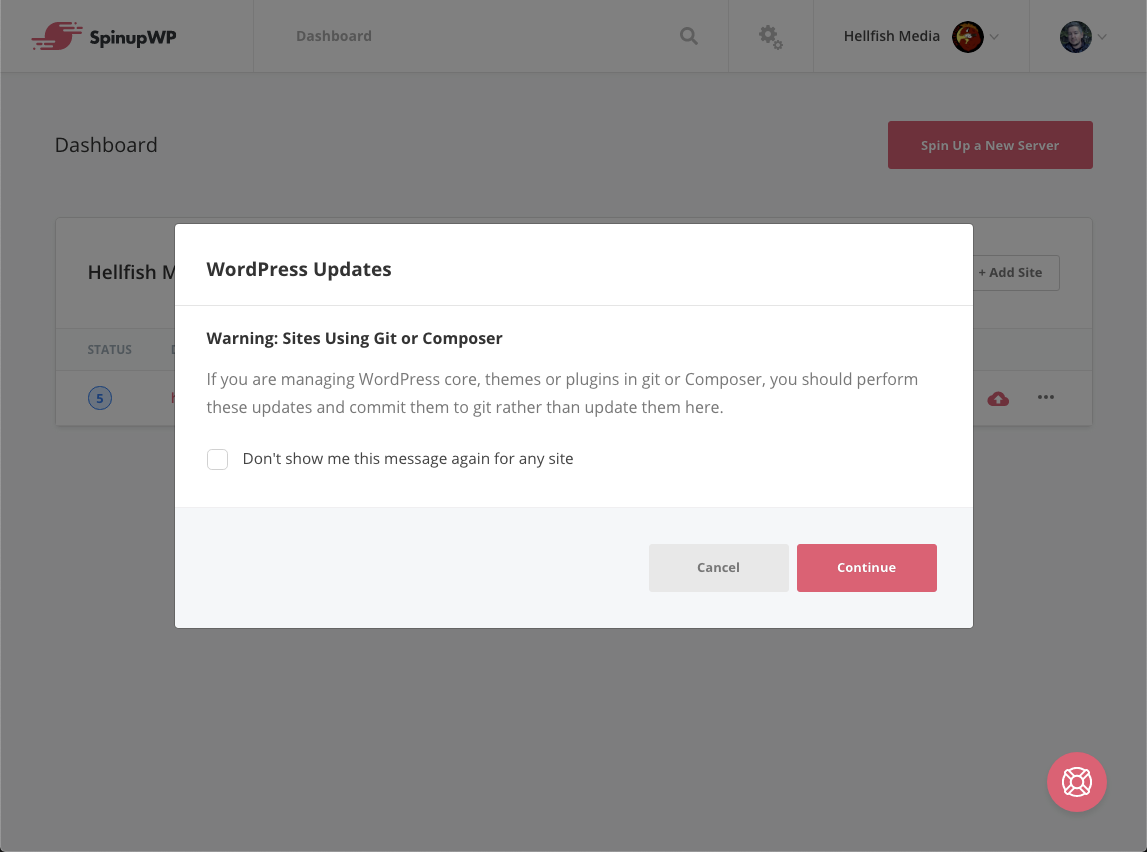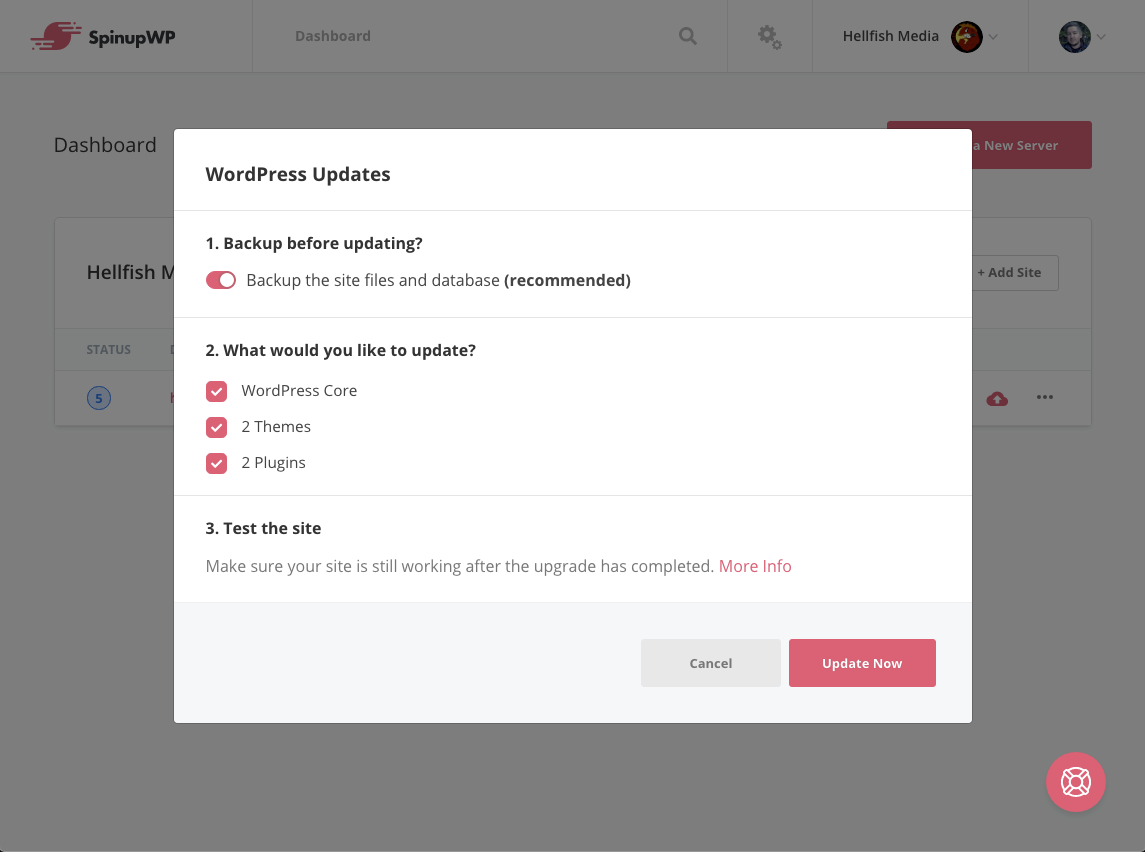Updating WordPress Core, Themes, & Plugins
By default, on a new WordPress install, minor versions of WordPress core are set to automatically update for you. However, major versions of WordPress core, plugins and themes are not set to update automatically. You can read more about automatic updates built into WordPress and configuration options here.
SpinupWP automatically checks for updates to WordPress core, themes and plugins once every 24 hours using WP-CLI. You also have the ability to run these updates directly from SpinupWP. When pending WordPress updates are found, you’ll see a notification icon with the number of updates available next to the site on your dashboard:

You can click on this icon to bring up the WordPress update options.
Sites Managed With Git or Composer

If you are managing WordPress core, themes or plugins in git and/or with Composer, you should perform WordPress updates as you normally would rather than updating via the SpinupWP dashboard. SpinupWP will not commit core, theme or plugin changes back to your git repository.
For example, if you have push-to-deploy enabled and your deploy script includes composer install, updates made via SpinupWP will be overwritten in the next deploy.
Selecting Your Update Options

1. Backup Before Updating
Creating a backup of the sites files and database is highly recommended before running any updates. SpinupWP will automate this for you if you have already enabled site backups. If you haven’t yet configured backups, you’ll see a link to the site backup settings.
2. Choosing What to Update
Next, you’ll be presented with update options and the number of updates per option, so you may choose what to update. Any items that are not checked to be updated will be left alone. After an update, you can find a detailed report of what was updated in the events section under the event labeled “Updating WordPress..” (accessible via the cogs icon at the top right of your dashboard).
Unlike WordPress auto-updates, SpinupWP will update your site to the latest major version of WordPress when available. All WordPress updates to your site are run directly on your server using the site user and WP-CLI commands.
3. Testing Your Site After Updates
Last but not least, as with all changes that could potentially break something on your site, we recommended testing your site thoroughly after making any updates. At a minimum, you should perform the following actions:
Confirm that the WordPress admin is reporting the versions and updates expected.
Make sure you are logged in or page caching is disabled to ensure you’re not testing outdated pages.
Visit your site and browse around several pages to check for any possible issues.
Take special care to check portions of your site that are directly impacted by plugins or themes that you have updated. For example, if you’re running an e-commerce plugin such as WooCommerce, test the checkout process.
If any issues present themselves, follow our backup restore process to roll back to your recently created backup.